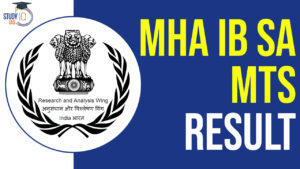Daily Current Affairs for UPSC 2023
Q) Which one of the following statements is not correct about Aadhaar-enabled Payment Services (AePS)?
- AePS allows online financial transactions at the point of sale.
- It allows fund transfers using only the Aadhaar number.
- AePS enables customers to make intrabank fund transfers.
- It removes the need for bank account details to transfer funds.
Daily Current Affairs for UPSC – 15 May April 2023
Explanation:
- Option (1) is correct: Aadhaar-enabled Payment Services (AePS) is a bank-led model which allows online financial transactions at Point-of-Sale (PoS) and Micro ATMs through the business correspondent of any bank using Aadhaar authentication.
- Option (2) is incorrect: Recently, cybercriminal misused Aadhaar-enabled Payment Services (AePS) to siphon money from users’ bank accounts. It allows fund transfers using the bank name, Aadhaar number, and fingerprint captured during Aadhaar enrolment.
- Option (3) is correct: The AePS system enables customers to access Aadhaar-linked bank accounts to do operations like depositing cash, withdrawing money, intrabank or interbank fund transfer, balance inquiry, and obtaining a mini statement.
- Option (4) is correct: It removes the need for OTPs, bank account details, and other financial details. Users who wish to receive any benefit or subsidy under schemes notified under section 7 of the Aadhaar Act, have to mandatorily submit their Aadhaar number to the banking service provider. Aadhaar is also the preferred method of KYC for banking institutions, thus enabling AePS by default for most bank account holders.
Q) Consider the following statements about Prevention of Sexual Harassment (PoSH) Act:
- It applies to both government and non-governmental organizations.
- The Internal Complaints Committee must provide a report to the employer within a month of completion of the inquiry.
- As per the act, the Internal Complaints Committee can also recommend the deduction of the salary of the guilty person.
Which of the statements given above is/are correct?
- 1 and 2 only
- 2 and 3 only
- 1 and 3 only
- 1, 2 and 3
Explanation:
- Statement 1 is correct: The formation of the Prevention of Sexual Harassment (PoSH) Act, officially known as the Sexual Harassment of Women at Workplace (Prevention, Prohibition, and Redressal) Act, can be traced back to the landmark judgment of the Supreme Court of India in 1997, commonly referred to as the Vishakha case. It applies to all workplaces, including the private sector, government organizations, and non-governmental organizations. The PoSH Act mandates the formation of internal complaints committees at workplaces, sets out procedures for filing complaints, investigation processes, and the penalties for non-compliance. A section of wrestlers were recently protesting, demanding the removal of the President of Wrestling Federation on the allegations of sexual harassment.
- Statement 2 is incorrect: During inquiry process, the internal complaints committee (ICC) has powers similar to those of a civil court in respect of summoning and examining any person on oath and requiring the discovery and production of documents. After completion of inquiry, ICC must provide a report of its findings to the employer within 10 days. This report must be provided to both parties. The identity of the complainant, respondent, witness, any information on the inquiry, and action taken, should not be made public.
- Statement 3 is correct: The ICC may recommend employer to take action in accordance with the provisions of the service rules of the company, which may vary from company to another. ICC may recommend deduction of salary of the guilty person. Compensation to the victim is based on five aspects that is, suffering caused to the woman; loss in career opportunity; medical expenses; financial status of the respondent; and the feasibility of such payment. In case the victim or the accused is not satisfied, they may appeal in court within 90 days.
Q) With reference to Enforcement Directorate (ED), consider the following statements:
- It is an attached office of the Ministry of Home Affairs.
- It is responsible for investigating violations of foreign exchange laws.
- ED enforces the provisions of the Prevention of Money Laundering Act, 2002.
Which of the statements given above is/are correct?
- 1 and 2 only
- 2 and 3 only
- 1 and 3 only
- 1, 2 and 3
Explanation:
- Statement 1 is incorrect but statement 2 is correct: Enforcement Directorate is a multi-disciplinary organization mandated with investigation of economic crimes and violations of foreign exchange laws. It is an executive agency under the Department of Revenue, Ministry of Finance (GoI). Recently, Enforcement Directorate (ED) has unearthed properties estimated at ₹457 crore during searches on Santiago Martin and others under the provisions of the Prevention of Money Laundering Act (PMLA), 2002.
- Statement 3 is correct: ED enforces provisions of the Foreign Exchange Management Act, 1999; the Prevention of Money Laundering Act, 2002; the Fugitive Economic Offenders Act, 2018. The ED has been given responsibility to enforce the provisions of the PMLA by conducting investigation.
- To trace the assets derived from proceeds of crime,
- To provisionally attach the property, and
- To ensure prosecution of offenders and confiscation of property by the Special Court.
Q) Consider the following statements about the Kohinoor Diamond:
- It was first mined during the rule of the Kakatiya dynasty.
- Jahangir placed the Kohinoor on the peacock throne.
- It came into the possession of the British East India Company through the Treaty of Amritsar.
Which of the statements given above is/are correct?
- 1 only
- 1 and 2 only
- 2 and 3 only
- 1, 2 and 3
Explanation:
- Statement 1 is correct: The Kohinoor is one of the oldest and most famous diamonds in the world. It is believed that the diamond was first mentioned more than 5000 years ago in a Sanskrit script, where it was called the Syamantaka. The name of the stone is Persian, meaning ‘Mountain of Light’ and refers to its astounding size. This colourless diamond is believed to have been first mined in the 13th century, near Guntur in Andhra Pradesh by the Kakatiya dynasty.
- Statement 2 and 3 are incorrect: Over the years, the jewel got passed on to the Delhi Sultan Alauddin Khilji and then to the Mughal Empire following which Persian invader Nadir Shah took it to Afghanistan. Both Babur and his son and successor, Humayun mention in their memoirs the origins of ‘the Diamond of Bābur’. Shah Jahan, the fifth Mughal emperor, had the Kohinoor placed into his ornate Peacock Throne. Along with the Peacock Throne, Nadir Shah also carried off the Koh-i-Noor to Persia in 1739. After the assassination of Nādir Shāh in 1747, the stone came into the hands of his general, Ahmad Shāh Durrānī, who later became the Emir of Afghanistan. The Kohinoor passed through different dynasties before reaching Ranjit Singh, the Sikh Maharaja of Punjab, in 1809. Ranjit Singh died in 1839. Upon the defeat of Punjab in the Second Anglo Sikh War, the Last Treaty of Lahore was signed. In Article 3 of the treaty, the British demanded the Koh-i-Noor be surrendered to the Queen of England.
Q) Consider the following statements:
- The River Mahanadi passes through this area.
- It is located in Eastern Highlands moist deciduous forests ecoregion.
- Gharials, Mugger crocodile and Indian softshell turtle can be found here.
Which one of the following Wildlife Sanctuary/Tiger Reserve is best described in the statements given above?
- Simlipal Tiger Reserve
- Debrigarh Tiger Reserve
- Karlapat Wildlife Sanctuary
- Satkosia Wildlife Sanctuary
Explanation:
- Option (4) is correct: Satkosia Wildlife Sanctuary of Odisha has witnessed the dwindling of elephant population. Satkosia sanctuary is located in a place where the Mahanadi River passes through a 22 km long gorge in the Eastern Ghats Mountains. It was created in 1976. The name Satkosia originates from two words; sat meaning seven and kos meaning two miles, indicating the length of the gorge as 14 miles or 22 km. The sanctuary is located in Eastern Highlands moist deciduous forests ecoregion. The major plant varieties are mixed deciduous forests including Sal. It is known for Gharials, Mugger crocodile and rare freshwater turtles like Chitra indica and Indian softshell turtle. The area was declared as Satkosia Tiger Reserve in 2007, comprising two adjoining wildlife sanctuaries; the Satkosia Gorge sanctuary and Baisipalli sanctuary. It is also the 3rd Ramsar site of Odisha.


 SSC Stenographer 2024 Notification Out a...
SSC Stenographer 2024 Notification Out a...
 IB SA MTS Final Result 2024 Out at mha.g...
IB SA MTS Final Result 2024 Out at mha.g...
 Model Skill Loan Scheme, Eligibility, Re...
Model Skill Loan Scheme, Eligibility, Re...

















